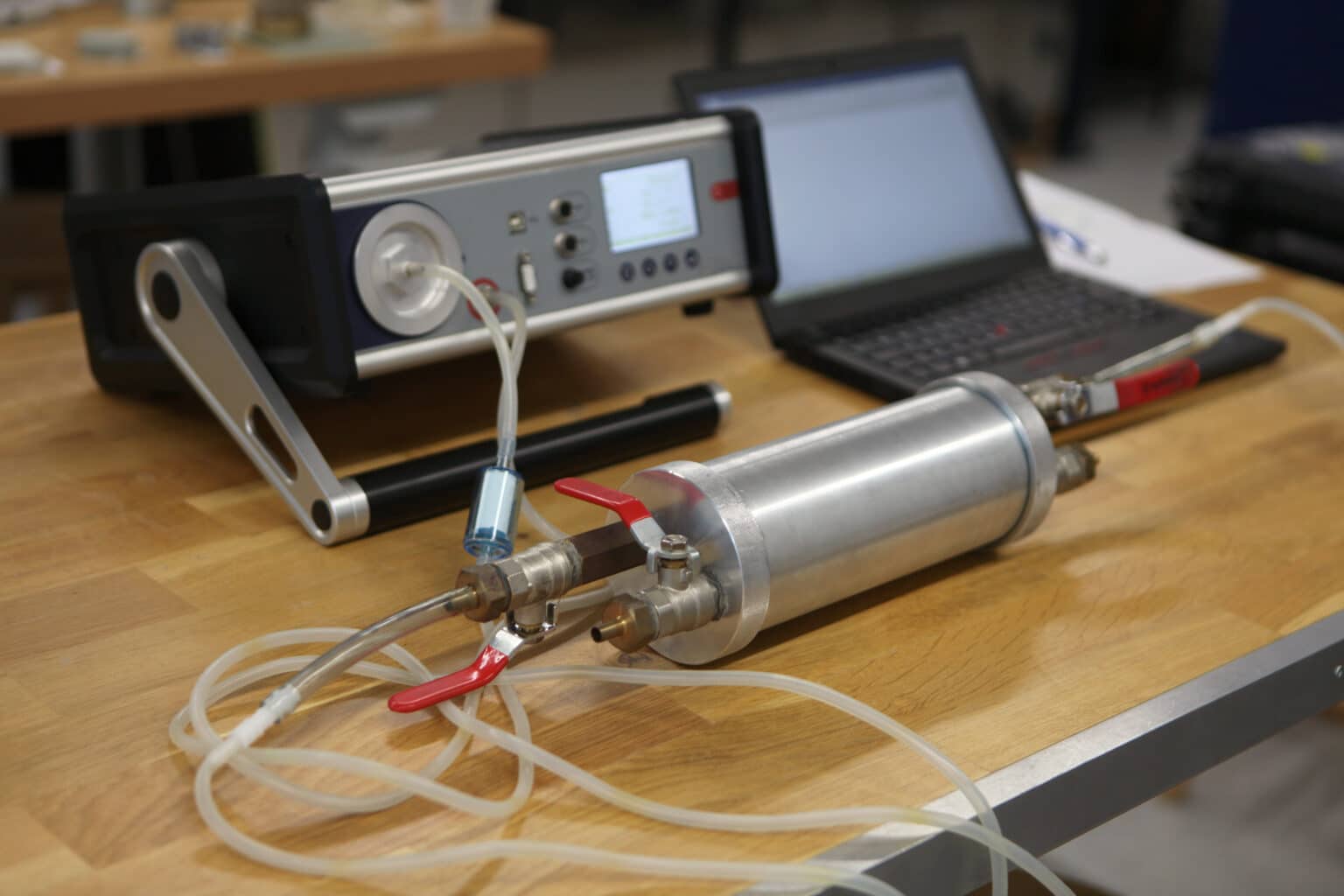Best Radon Monitor for Home Inspectors: Selecting the Right Device to Safeguard Clients
Last Updated November 9, 2023

When looking for new technologies to invest in to provide additional services to your clients, deciding between the many options can be tough. You may consider what’s popular in the industry. Amongst those insured by InspectorPro, radon inspections are the most popular ancillary service—so popular, in fact, that offering radon testing has become an expectation rather than an option in some areas of the country.
Radon is the colorless, odorless gas emitted into the air by the radioactive element, radium, as it breaks down in soil, rock, and water. Typically, radon enters buildings through small cracks or openings in foundations undetected. Once radon has entered a property, it may be trapped inside. In fact, with the help of radon monitors, inspectors test for the amount of trapped radon during their inspections.
In this article, we explore opinions about what makes the best radon monitor for home inspectors. We also give you tips to manage your risk against radon-related claims.
What are radon monitors?
Radon monitors are instruments that measure properties’ radon levels. If radon levels of four picocuries per liter (4 pCi/L) or higher are present—which the United States’ Environmental Protection Agency (EPA) estimates for nearly one in every 15 households—then the EPA urges to take corrective measures, including setting up radon-reduction systems.
There are two groups of radon devices for short-term testing: passive devices—such as alpha track detectors, charcoal canisters, carbon liquid scintillation detectors, and electret ion chamber detectors—and active devices—including continuous radon monitors (CRMs) and continuous working level monitors.
Most of the inspectors we interviewed and surveyed use active devices because of the following benefits:
- Collect data on a range of variations within a test period
- Can detect or deter interference
- Provide instant results
- Supply evidence of tampering
- Have delayed start capabilities to ensure compliance
- Fulfill mortgage lender, Federal Housing Administration (FHA), and state requirements
- Impress and attract customers
Almost every inspector who uses active monitors cited timeliness as a key advantage. According to Ross Relyea of Sweet Homes Chittenago, LLC in New York, rapid results are essential for the fast-paced housing market.
“Most realtors want the results as quickly as possible to facilitate the timeline on the transaction. Active radon monitors get the results on the same day,” Relyea said.
Despite active monitors’ benefits, they are significantly more expensive than their passive counterparts. While the average carbon canister costs about $30 per canister, continuous radon monitors cost about $1,200 plus an added $150 annually for calibrations. Due to the financial impact of the decision, inspectors need to consider not just the brand and model they wish to use but also how they wish to pay.
Should you lease or buy?
In preparing for this article, we surveyed 39 home inspectors about their radon monitor leasing and buying habits. There are many radon monitor programs, distributors, and laboratories, several of whom are ASHI Affiliates. However, our small sample size happened to show some unanimity: Almost all of the inspectors who leased did so through Radalink. And most inspectors that purchased monitors did so through SunRADON. But brands aside, is renting or owning best for you?
A Case for Leasing
Many radon device vendors offer leasing programs that allow payments at a monthly rate rather than paying for machines outright. Home inspectors that prefer to lease appreciate not having to invest in pricey radon technology in one transaction. Furthermore, they like the ability to customize the number of monitors they lease to adjust to fluctuating client demand, including seasonal slumps. However, from a risk management perspective, outsourcing calibration and documentation are the two most compelling reasons to rent monitors.
Calibration
Many states have rules and regulations regarding how often you have to calibrate your device. According to Guy Occhino of Sherman Home Inspections, LLC in Massachusetts, renting prevents him from losing precious time or money when a monitor needs to be calibrated or fails. When it’s time for annual calibration, Radalink sends him a replacement monitor in advance so that Occhino doesn’t experience any downtime. And if a monitor is malfunctioning, Radalink will replace the monitor overnight and even reimburse the inspector for the cost of conducting a retest, if necessary.
During a storm, a house that Lisa Alajajian Giroux of HomeQuest Consultants, Inc. was testing for radon flooded, putting her monitor underwater. She was relieved to be able to send the device back and get it fixed promptly.
Documentation
In addition to calibration regulations, some states even require activity reports to assist in collecting data for their local testing and mitigation programs. For Jerry Pickholtz of Greenlight Home Inspections in Maryland, Pennsylvania, and Washington D.C., having Radalink file compliance paperwork with Pennsylvania gives him one less thing to worry about.
But even inspectors who live in unregulated states find documentation benefits in leasing. Alajajian Giroux in Massachusetts appreciates the professionalism, detail, and readability of Radalink’s reports. Not being a radon scientist herself, Alajajian Giroux appreciates that experts review each of her reports and that, if she has any questions about the results, she can call for help.
“We maintain all documentation requirements for radon testing in accordance with the NCR’s protocols and incorporate all that with the reports,” said Terry Howell, President of Radalink. “According to Minnesota, to date, we are the only laboratory that meets those full standards.”
“I wanted a report I could stand behind legally and professionally, one I could put my full confidence behind,” Alajajian Giroux said. “What I like about Radlink is that I’m not interpreting the report; they are.”
According to Howell, if Radalink’s specialists see any problems or have questions about anomalies, they will contact the inspector to discuss those irregularities with the inspector before issuing the report. In so doing, Radalink aims to provide inspectors with one of the most defensible radon reporting systems available.
A Case for Buying
Others, like Steve Green of Total Home Inspection, LLC in South Dakota, prefer to own their radon detectors.
“I’m interested in things I can buy and pay off and not have ongoing payments associated with it,” Green said.
By paying for monitors outright, some inspectors argue that they can be more profitable. While leasing providers charge around $165 per monitor per month—with some discounts for renting multiple monitors—purchasing providers typically charge about $1,200 per monitor. Green said it took 12 transactions ($100 each) for his radon monitor to pay for itself. Others said payoff occured in as few as four tests ($300 each).
Additionally, inspectors like Rosa Fleming of WIN Home Inspection Royalton in Ohio appreciate having the autonomy to manage their own machines.
“I prefer to own because I have more control over calibrating and performing cross checks. Owning gives me the confidence that we are able to perform a radon test on any sized home at any time of year,” Fleming said.
Limiting Your Liability
When it comes to radon monitors, limiting your liability happens when you take care of your equipment and set appropriate expectations with clients. We discuss how below.
Know how to use your monitors.
To properly use your radon monitors and report their findings, you need to know how they work. Knowing how your monitors function—and what happens when they’re malfunctioning—can help you avoid putting false readings in your inspection reports.
To limit your liability even further, Jameson Malgeri of Another Level Inspection in Massachusetts recommends helping your clients understand your inspection tools, too.
“There’s always some level of inaccuracy. I don’t think anything is a perfect tool,” Malgeri said. “Explain each tool to the client so they have a real understanding of the margin for error.”
Calibrate your monitors regularly.
Are you the type of person who doesn’t worry about your tools until you notice a problem? If you are, you may want to change your habits. If you fail to calibrate your radon monitors regularly, you have liability for claims caused by the monitors’ failure.
According to Mike Leggett of The BrickKicker of Georgia, maintaining equipment is important for not only risk management but also client safety.
“Radon monitors are supposed to be calibrated annually, and that’s important because those radon monitors save people’s lives. If they’re not calibrated and they’re giving false negatives, then I can see that being a liability,” Leggett said.
 Encourage clients, homeowners, and real estate agents to not tamper with radon tests.
Encourage clients, homeowners, and real estate agents to not tamper with radon tests.
Some of the radon-related pre-claims and claims we receive have to do with testing malfunctions. In one case, homeowners opened windows during testing, resulting in fluctuating levels reported by our insured inspector and other specialists.
To avoid this, we recommend inspectors explain procedures to clients and others who could unintentionally interfere with measurements. By helping everyone understand not to move monitors or alter testing conditions, you can avoid accusations of compromised testing.
Monitor failed? Offer to retest for free.
If you still give a bad reading in your report due to a monitor failure, offer to retest for free.
In a recent claim, a home inspector’s radon monitor was defective and gave an inaccurate result. The inspector resolved the claim by retesting with a functioning monitor. The inspector’s willingness to return to the property to perform the service again at no cost to the client defused the situation and eliminated any need for further action.
Carry equipment coverage.
Formally known as inland marine coverage or a commercial property floater, equipment coverage insures your inspection tools and equipment. Unlike standard property insurance, inland marine coverage protects your tools and equipment regardless of their location. This is important in the home inspection industry since, rather than housing your tools and equipment in an office, you usually have your materials in your work vehicle or on inspection sites.
Better yet, equipment coverage can insure radon monitors that you own or loan. You just need to update your equipment schedule any time you swap one leased monitor for another.
Through InspectorPro with the ASHI Advantage, ASHI members can get up to $20,000 in equipment coverage for $200 annually. Click here to learn more about inland marine coverage. Current clients can request equipment coverage by contacting their InspectorPro brokers. Prospective clients can apply for insurance here.
Delegate it.
While you may wish to offer radon testing, you may not be interested in shouldering the additional responsibilities and requirements. Furthermore, if you’re a one-person operation in high demand, you might feel you don’t have the time.
That’s why Wayne Sieling of Ability Home Inspections in Minnesota began outsourcing the service to professional radon testing companies. For every referral, Sieling receives $25 and his clients get quick and accurate testing.
“By having someone else do the testing, I get to keep moving on my inspections. It’s been the best decision I’ve made for my company because, without doing my own radon testing, I can take on more inspections,” Sieling said.
Interested in delegating radon testing to another individual or company? Before starting your referrals, ask them to name you as an additional insured on their policy. Learn more about how and why here.
Best Radon Monitor for Home Inspectors
If you are (or want to be) testing for radon, it’s important to invest in the proper equipment. Avoid potential claims by leasing or purchasing the right monitors for your inspection business. Then take care of that equipment with proper use, regular calibration, and equipment coverage.





